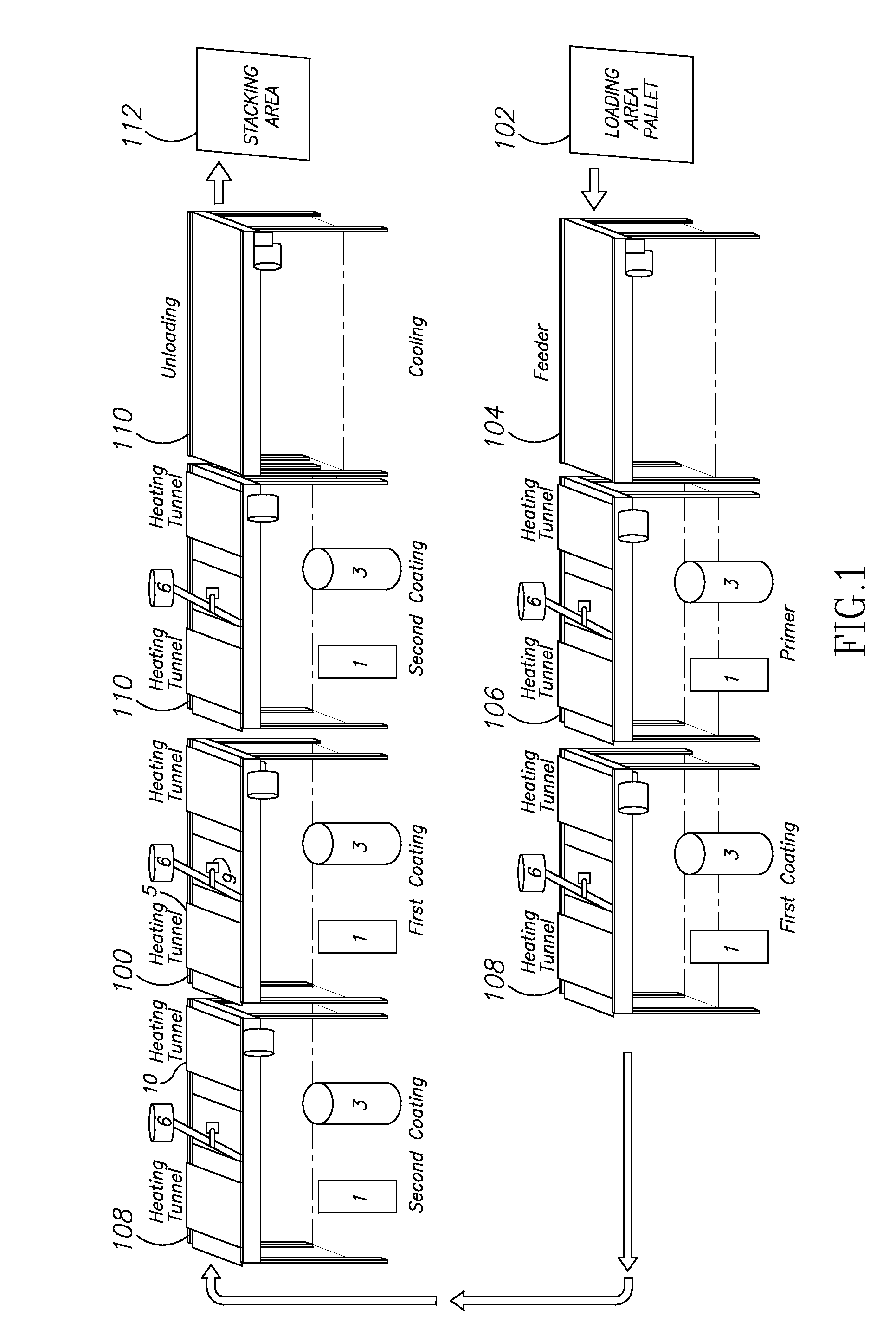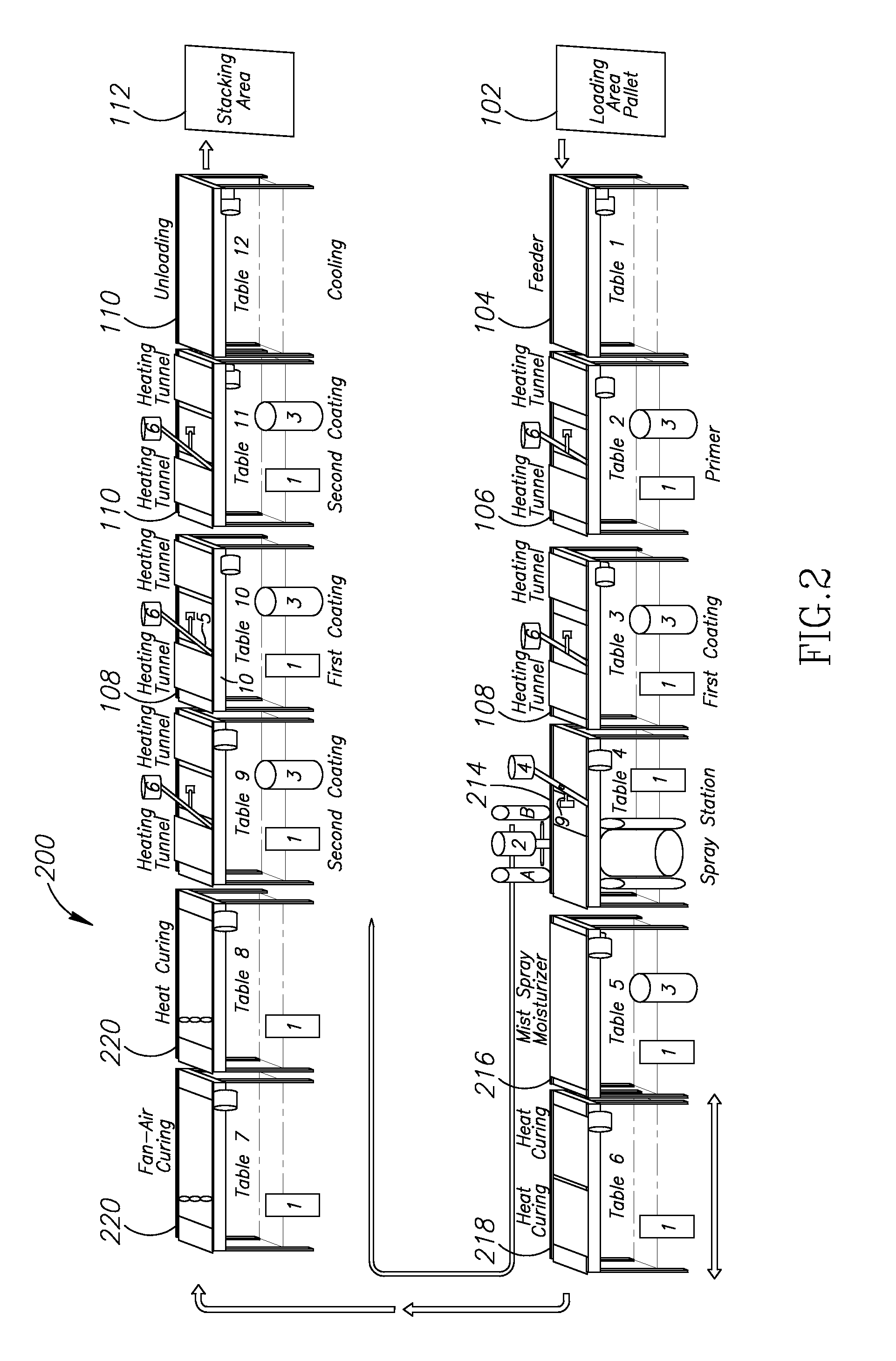Fire resistant paint, articles of manufacture, an apparatus for manufacture and a process for manufacture thereof
a technology of fire-resistant paint and manufacture apparatus, which is applied in the direction of water-setting substance layered product, transportation and packaging, coatings, etc., can solve the problems of toxic fumes, easy burning, and neither method alone is adequate, so as to reduce the risk of fire, and reduce the effect of heat loss
- Summary
- Abstract
- Description
- Claims
- Application Information
AI Technical Summary
Benefits of technology
Problems solved by technology
Method used
Image
Examples
example 1
Application to Wood
[0049]A fire-retardant coating material was prepared that included a fluid intumescent material (a non-limiting example of the intumescent base). The fluid intumescent material included a foaming agent; a blowing agent gas source selected from the group consisting of melamine, urea, dicyandiamide, guanidine and glycine; a charring agent, a film-forming binder, a solvent and, in some cases, a pigment or filler. Half a gallon of the intumescent material was mixed with 8 ounces of refractory fibers, which in this non-limiting example comprised 3 ounces of milled fiber and 5 ounces of short strand fibers. The fibers comprised aluminum oxide (about 50% of the total fibers weight per weight), silicon dioxide (about 50%), ferric oxide (about 0.15%), titanium dioxide (about 0.15%), potassium oxide (about 0.15%), sodium oxide (about 0.2%) and zirconium oxide (about 0.2%). This combination was mixed with 16 ounces of granite powder and applied as a coating to one side of a ...
example 2
Coated Fabric
[0056]The same composition of Example 1 was applied to one side of a fabric article, featuring two pieces of heavy duty plain woven fabric attached together with fire related silicone sealant in which the coating was applied at the same thickness as for the wood in Example 1. The fabric tested was a Pyroblanket (ADL Insulflex Inc), although optionally canvas, fiberglass (optionally coated), Kevlar, mineral impregnated or coated fabric, aluminum and other sheet metal fabrics may be used, additionally or alternatively. The silicone sealant tested was Metacaulk 1000 (Rectorseal).
[0057]A propane torch, at a temperature of 1300 F, was applied to the coated fabric for 17 minutes. Again, while the coating bubbled and swelled, the fabric maintained its integrity and was cool to the touch on the side away from the flame. The coated fabric was found to withstand a similar temperature range as for wood in Example 1.
example 3
[0058]The same composition of Example 1 was applied to one side of a piece of cardboard at the same thickness as for the wood in Example 1. A propane torch, at a temperature of 1300 F, was applied to the coated cardboard for 12 minutes. Again, while the coating bubbled and swelled, the fabric maintained its integrity and was cool to the touch on the side away from the flame. The coated fabric was found to withstand a similar temperature range as for wood in Example 1.
PUM
| Property | Measurement | Unit |
|---|---|---|
| size | aaaaa | aaaaa |
| size | aaaaa | aaaaa |
| size | aaaaa | aaaaa |
Abstract
Description
Claims
Application Information
 Login to View More
Login to View More - R&D
- Intellectual Property
- Life Sciences
- Materials
- Tech Scout
- Unparalleled Data Quality
- Higher Quality Content
- 60% Fewer Hallucinations
Browse by: Latest US Patents, China's latest patents, Technical Efficacy Thesaurus, Application Domain, Technology Topic, Popular Technical Reports.
© 2025 PatSnap. All rights reserved.Legal|Privacy policy|Modern Slavery Act Transparency Statement|Sitemap|About US| Contact US: help@patsnap.com


